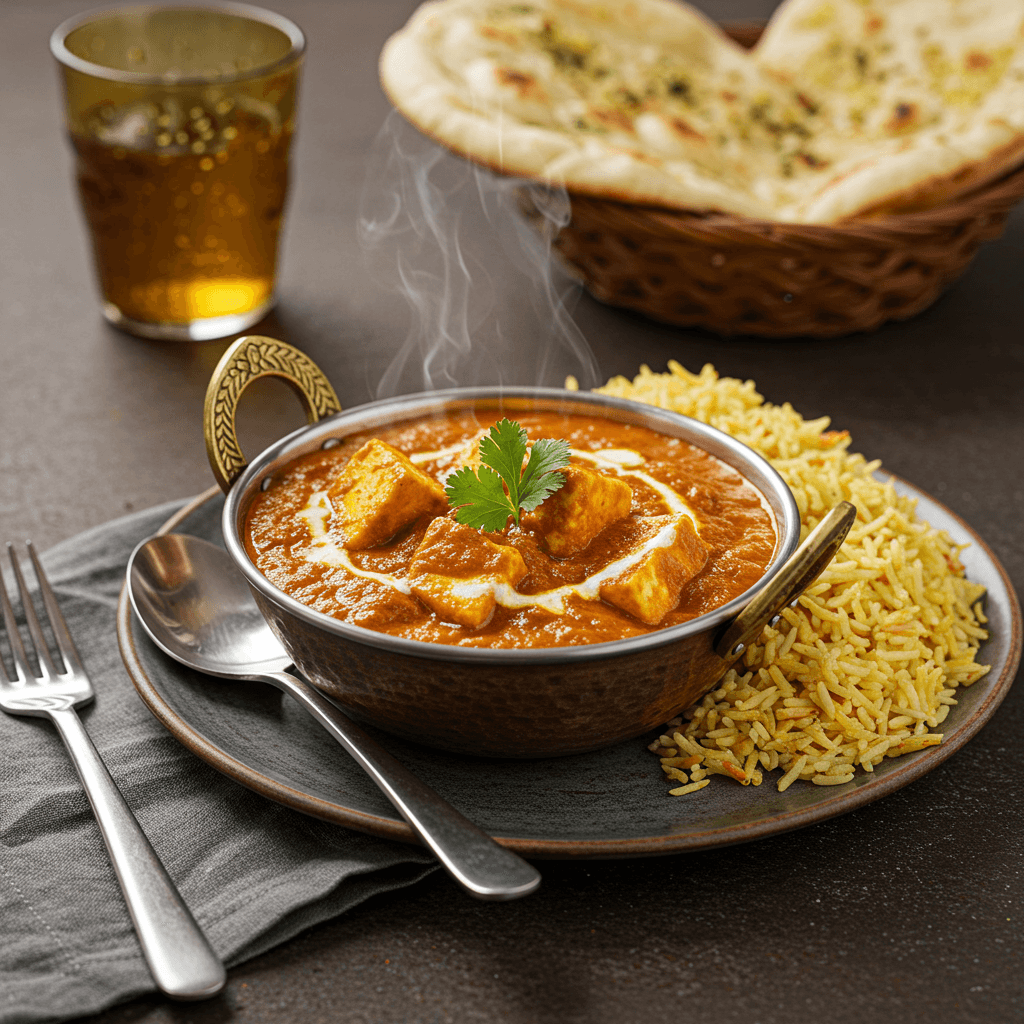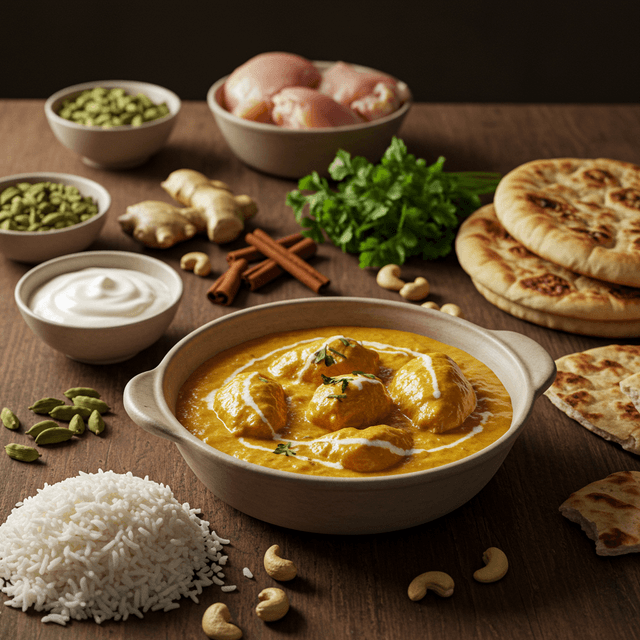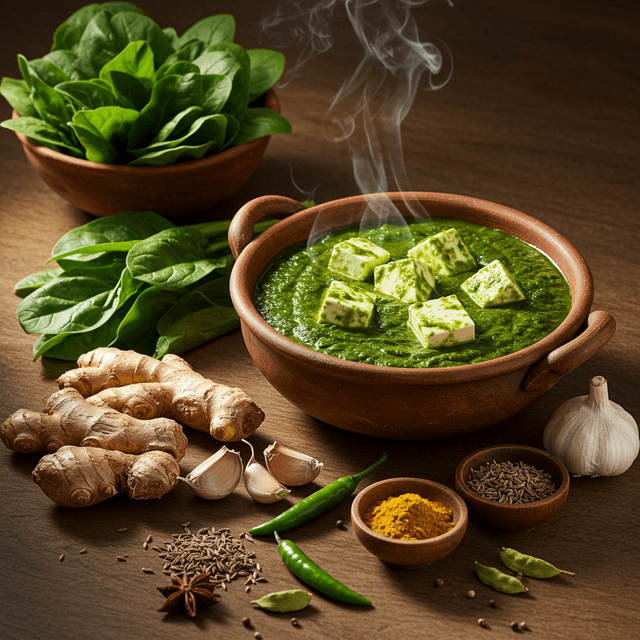Unlocking the Secrets of Restaurant-Quality Paneer Tikka Masala at Home
Have you ever savored a spoonful of rich, creamy Paneer Tikka Masala at your favorite Indian restaurant and wished you could recreate that magic in your own kitchen? That perfect balance of smoky paneer, aromatic spices, and a velvety tomato-based sauce seems like an enigma reserved for professional chefs. But what if we told you it's not only possible but also incredibly rewarding to master this iconic dish at home?
The Allure of Authentic Indian Flavors
Indian cuisine is a symphony of flavors, textures, and aromas, and Paneer Tikka Masala stands as a testament to its culinary brilliance. It’s a dish that captivates with its vibrant color, tantalizes with its complex spice profile, and comforts with its creamy richness. Originating from the Punjabi region, this beloved vegetarian curry has captivated palates worldwide, becoming a staple in Indian restaurants and a go-to for many food enthusiasts.

Why Making Your Own is Better Than Takeout
While the convenience of takeout is undeniable, crafting Paneer Tikka Masala at home offers unparalleled benefits. You gain complete control over the quality of ingredients, ensuring freshness and avoiding preservatives. You can customize the spice level to perfectly match your preference, dialling up the heat or mellowing it down. Plus, there’s an immense sense of satisfaction and pride in serving a homemade dish that rivals, or even surpasses, your favorite restaurant’s version – all while often being more cost-effective and healthier.
[image removed]
Paneer Tikka Masala: A Culinary Journey Worth Taking
Embarking on the journey to make Paneer Tikka Masala might seem daunting, but it's an incredibly fulfilling experience. Each step, from marinating the paneer to simmering the sauce, builds layers of flavor, transforming simple ingredients into a gourmet meal. It’s more than just a recipe; it’s an exploration of Indian culinary techniques and a chance to truly connect with your food.

Elevating Weeknight Dinners
Imagine turning a mundane Tuesday evening into a culinary celebration. With a little planning, Paneer Tikka Masala can become your secret weapon for transforming ordinary weeknight dinners into extraordinary dining experiences. It’s a dish that feels special and indulgent, yet once you master the steps, it’s surprisingly manageable to prepare after a busy day.
Impressing Friends and Family with Effortless Elegance
Hosting a dinner party? Paneer Tikka Masala is a showstopper. Its vibrant appearance, complex flavors, and comforting warmth make it an ideal centerpiece for any gathering. Your guests will be impressed by your culinary prowess, and you’ll find joy in sharing a dish that truly shines. The best part? The elegance feels effortless once you have our expert tips in your arsenal.
Sourcing the Stars: Your Ingredient Checklist
The secret to any great dish lies in the quality of its ingredients. For Paneer Tikka Masala, this holds especially true. Thoughtful selection ensures that every bite is bursting with authentic flavor.
Selecting Premium Paneer: The Foundation of Flavor
Paneer, a fresh, non-melting cheese, is the undisputed star of this dish. Look for firm, fresh paneer that holds its shape well. High-quality paneer will absorb the marinade beautifully, becoming tender and flavorful when cooked. Many supermarkets now carry excellent quality paneer, or you might find artisanal options at Indian grocery stores. You can even make your own at home for an extra fresh touch!

Spice Rack Essentials: Building Your Masala Blend
A well-stocked spice rack is crucial for Indian cooking. For our Tikka Masala, you’ll need: ground coriander, cumin powder, turmeric, red chili powder (Kashmiri chili powder for color, cayenne for heat), garam masala, and fenugreek leaves (kasoori methi) for that authentic aroma. Using fresh, aromatic spices will make a world of difference.
Freshness First: Produce and Pantry Staples
Beyond the paneer and spices, gather fresh onions, ginger, garlic, and ripe tomatoes (or good quality canned crushed tomatoes). You’ll also need plain yogurt for the marinade, heavy cream for the sauce’s richness, cooking oil (like vegetable or canola), and perhaps some fresh cilantro for garnish. A squeeze of lemon juice can brighten the flavors at the end.

Mastering the Marinate: A Symphony of Spices
The marinade is where the paneer transforms, absorbing a symphony of spices and developing its signature 'tikka' flavor before hitting the heat.
The Art of the Perfect Paneer Marinade
Cut your paneer into bite-sized cubes. In a bowl, combine thick plain yogurt with ginger-garlic paste, a blend of spices (coriander, cumin, turmeric, chili powder, garam masala), a pinch of salt, and a dash of lemon juice. Gently toss the paneer cubes in this mixture, ensuring each piece is thoroughly coated. For best results, marinate for at least 30 minutes, or ideally, 2-4 hours in the refrigerator. This allows the paneer to soak up all those incredible flavors and tenderize slightly.

Balancing Heat and Aroma: A Spice Guide
The key to a great marinade is balance. Kashmiri red chili powder provides a beautiful, vibrant red color without excessive heat. If you prefer more spice, add a touch of cayenne pepper. Cumin and coriander add earthy depth, while garam masala brings a warm, complex finish. Don't forget the ginger-garlic paste, which is fundamental to the aromatic base.
From Grill to Glaze: Achieving that Smoky Char
The 'tikka' in Paneer Tikka Masala refers to the charred, smoky paneer pieces. This step is critical for developing the signature flavor profile.
Grilling Techniques for Perfect Paneer
Once marinated, the paneer needs to be cooked until it develops a beautiful char. You can achieve this using various methods: thread the paneer onto skewers and grill them over an open flame or in a hot oven (broil setting). Alternatively, cook them in a hot cast-iron skillet or on a griddle pan. The goal is to get a slightly crispy, smoky exterior while keeping the inside tender.

The Secret to a Smoky, Delicious Crust
High heat is your friend here. Don’t overcrowd your pan or grill, allowing each piece to cook evenly and develop that coveted char. A little patience will pay off with perfectly cooked paneer that boasts a smoky depth, providing a delightful textural contrast to the creamy sauce.
Crafting the Creamy Masala Sauce: A Step-by-Step Guide
The rich, velvety sauce is what truly binds this dish together, making it a masterpiece of flavor and texture.
Building the Base: Layering Aromatics and Spices
Start by sautéing finely chopped onions until golden brown – this forms the sweet and savory foundation. Add ginger-garlic paste and cook until fragrant. Next, introduce your dry spices (cumin, coriander, turmeric, chili powder, garam masala), blooming them in the oil for a minute to release their full aroma. Stir in pureed tomatoes (or good quality crushed tomatoes) and cook down until the oil separates, indicating the raw tomato flavor has cooked out. This slow cooking is crucial for depth.

The Smooth Operator: Achieving a Silky Sauce Texture
For that restaurant-quality silky smoothness, consider blending your sauce once the tomato base has cooked. An immersion blender right in the pot works wonders, or transfer to a regular blender (carefully!). This step removes any onion or tomato chunks, resulting in a luxurious, uniform texture. Strain the sauce through a fine-mesh sieve for ultimate smoothness, if desired.
Creamy Perfection: Incorporating the Finishing Touch
Return the blended sauce to the pan. Stir in a generous splash of heavy cream, along with a pinch of sugar (to balance the acidity of the tomatoes), and most importantly, a tablespoon of crushed kasoori methi (dried fenugreek leaves). The kasoori methi is a game-changer, imparting an unmistakable nutty, slightly bitter aroma that defines authentic Tikka Masala. Simmer gently, then fold in your charred paneer pieces, allowing them to warm through and absorb the sauce.

Pro Tips for Paneer Tikka Masala Perfection
Elevate your dish from good to unforgettable with these expert insights.
Spice Level Customization: Tailoring to Your Taste
Don't be afraid to adjust the heat! If you prefer a milder curry, reduce the amount of red chili powder or cayenne. For more heat, add a fresh green chili, finely chopped, to the aromatics, or a dash more cayenne. Always taste as you go and adjust to your preference.
Ingredient Substitutions: Creative Alternatives
While paneer is traditional, you can experiment. Tofu (extra-firm, pressed, and marinated) makes an excellent vegan alternative. You could also try mushrooms, potatoes, or even chickpeas for added texture and protein. For a richer sauce, a tablespoon of cashew paste (blended raw cashews soaked in hot water) can be added with the cream.

Beyond the Recipe: Exploring Paneer Tikka Masala Variations
Once you've mastered the classic, the world of culinary innovation awaits!
Global Inspirations: Fusion Flavors to Explore
Think outside the box! Add a touch of smoked paprika for a deeper, smokier flavor, or a hint of star anise to the initial tempering for an exotic twist. You could even serve it with a side of naan brushed with garlic butter and fresh herbs, or alongside some lemon rice for a brighter counterpoint.
Creative Garnishes: Adding Visual Appeal
A beautiful garnish can transform your dish. Fresh cilantro, finely chopped, is a classic. A swirl of heavy cream or a dollop of plain yogurt can add an artistic touch. Toasted slivered almonds, a sprinkle of fresh ginger juliennes, or even a few pomegranate seeds can add color, texture, and an extra layer of flavor.
Common Pitfalls to Avoid: Troubleshooting Your Tikka Masala
Even seasoned cooks encounter challenges. Here's how to navigate common issues.
Overcooked Paneer: Maintaining Tenderness
The key to tender paneer is not to overcook it, especially during the grilling phase. Cook until lightly charred and golden, but no longer. Once added to the sauce, simply warm it through; excessive simmering can make paneer rubbery. If using frozen paneer, ensure it's fully thawed and pressed before marinating.
Lumpy Sauce: Ensuring Smooth Consistency
Lumps usually occur if the onions aren't finely chopped enough, or if the spices aren't cooked thoroughly, or if the sauce isn't blended. For a consistently smooth sauce, ensure you blend thoroughly and, if needed, pass the sauce through a fine-mesh sieve. Adding cream slowly while stirring constantly can also help maintain smoothness.
Your Table Awaits: Savor the Success
Congratulations! You've successfully unlocked the secrets to restaurant-quality Paneer Tikka Masala at home. Now, all that's left is to enjoy the fruits of your labor.
Serving Suggestions: Perfect Accompaniments
Paneer Tikka Masala is typically served hot with fluffy basmati rice, warm naan bread, or roti to scoop up every last drop of that delicious sauce. A side of cooling raita (yogurt with cucumber and spices) or a simple kachumber salad (diced onion, tomato, cucumber with lemon and cilantro) provides a refreshing contrast to the rich curry. Enjoy every delightful bite!
Frequently Asked Questions (FAQ)
Q: Can I use frozen paneer?
A: Yes, you can use frozen paneer. Thaw it completely, then gently press out any excess water before marinating and cooking. This prevents it from becoming too watery or rubbery.
Q: How long can I store leftover Paneer Tikka Masala?
A: Leftover Paneer Tikka Masala can be stored in an airtight container in the refrigerator for up to 3-4 days. Reheat gently on the stovetop or in the microwave, adding a splash of water or cream if the sauce has thickened too much.
Q: What are some vegetarian alternatives to paneer?
A: Excellent vegetarian and vegan alternatives include extra-firm tofu (pressed and marinated), firm button mushrooms, potatoes, chickpeas, or even cauliflower florets. These can be marinated and cooked similarly to paneer.
Q: Can I make this recipe in a slow cooker?
A: While the traditional method involves searing the paneer and sautéing the sauce base, you can adapt parts of this recipe for a slow cooker. Sauté the onions, ginger, garlic, and spices first on the stovetop for best flavor, then transfer to the slow cooker with tomatoes. Add the seared paneer and cream towards the end of the cooking time (last 30-60 minutes) to prevent the paneer from becoming tough. This method works well for developing deep flavors in the sauce.







